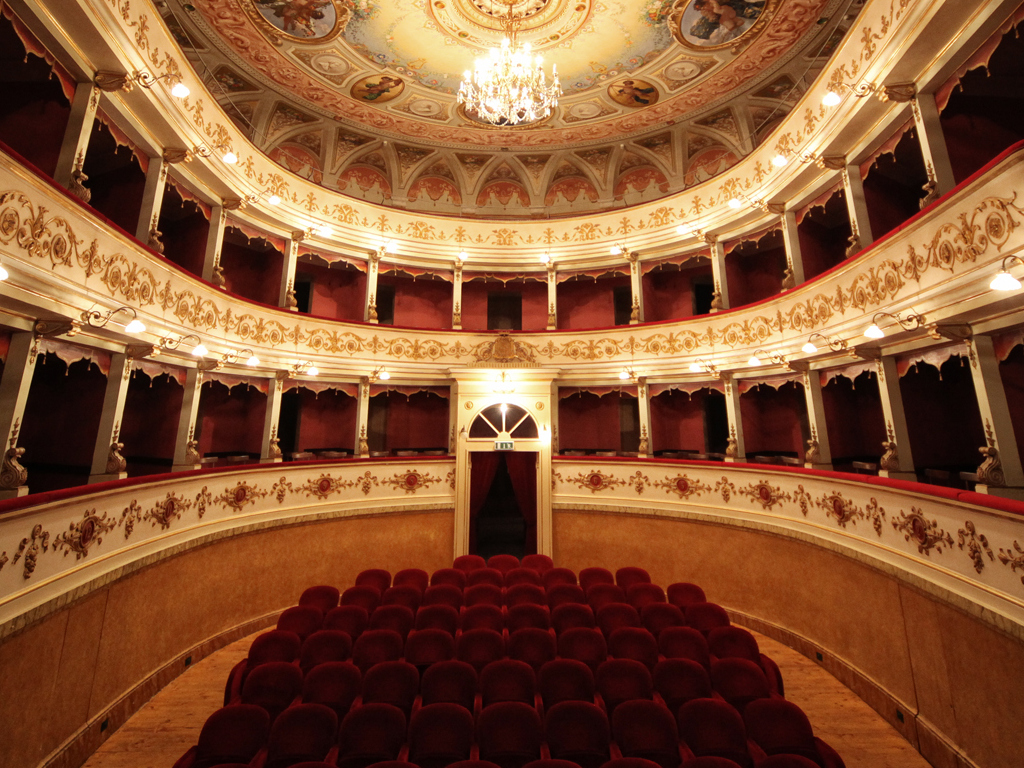As the‘600 century theatre situated inside the Town Hall was quite restricted, the municipality decided a reconstruction with an official deliberation.
The architect Ireneo Aleandri designed the new town theatre in 1868, as he had proposed its building in the area of San Francesco cloister, instead of the original collocation inside the Town Hall. The long planning, with many reconsiderations by the theatre commission, finished only in 1873, with the definitive approval of the project and the beginning of the works. However, these proceeded slowly, as the commission expressed some doubts about the building; that is why, in 1879, Ireneo Aleandro was asked to modify the project, with the addition of two boxes for each row. Aleandri did not agree so much to the changes of his project: this reason, and others (among whom the fact that he was 80 years old), impeded him to follow the works, so he was substituted by the roman architect Francesco Vespignani, that took the lead of the works. Vespignani concluded the building, with some changes comparing the original idea. Thanks to Vespignani, the theatre was enriched with all the decorations, in particular those that enrich the stage, and with the particular scenery’s mechanism created by the carpenter Vincenzo Andreani and his brothers. The same carpenters continued working until 1880 and they created all the wood decorations, furniture and the main door too. The theatre has two levels of boxes with parapets, with a horseshoe structure, typical from the ‘800 century theatres. The gallery was firstly designed by Aleandri to be the part of the third level, but instead Vespignani realized that, with its actual aspect: a unique balcony connected to the ceiling. Two pilaster strips support the scenic arc and they are connected to the four baignoires. The decorations in the vault, found mostly in the oval structures, represent the Comedy, Dance, Music and Tragedy allegories, and they were painted by the artist Annibale Brugnoli, while the parapets were decorated by the painter Pietro Giovanetti, from Sant’Angelo in Pontano. The lobby and the foyer are decorated with a particular ornamentation, designed and realized by the painter Giuseppe Fammilume, from Pollenza, in 1928. The theatre was inaugurated in January 1883, with showing the play “La Favorita” (the Favourite) by Gaetano Doninzetti.

